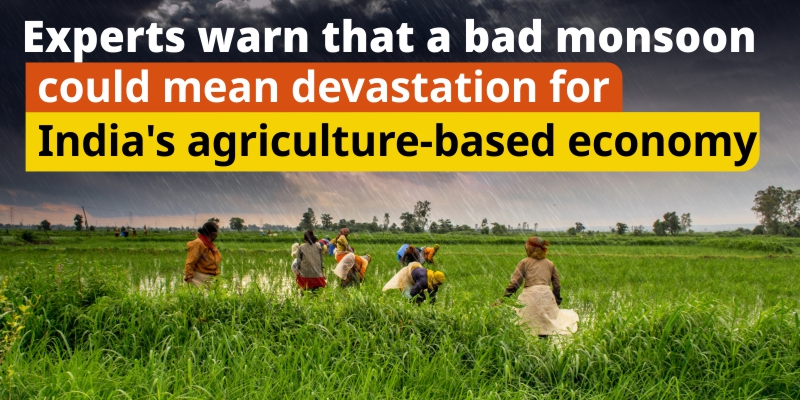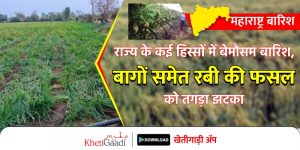Experts say India cannot afford a weak monsoon, which might signal disaster for its agriculture-based economy since it is already suffering from the consequences of severe heat waves. They hope that the recovery of monsoon rains will relieve food inflation and assure food security.
KhetiGaadi always provides right tractor information
The monsoon is responsible for over 70% of the country’s yearly rainfall and irrigates 60% of the country’s gross sown land. Agriculture employs over half of the population, either directly or indirectly.
Undoubtedly, a bad monsoon brings poor crop yield and inflation.
Heatwaves have already caused damage to rabi harvests, causing the government to halt wheat exports and reduce output forecasts by 5%, from 111.3 million tonnes to 106.4 million tonnes.
Another change in the weather pattern could have major implications for the country’s food security.
Whereas the MeT office has forecast a normal monsoon for the fourth consecutive year, its delayed pace in the first half of June has raised concerns about rice sowing delays.
The weather service, on the other hand, predicts that things will pick up and make up for any shortfall.
The forecast is favourable, and the rain is beginning to pour. According to Mrutyunjay Mohapatra, Director General (D-G), India Meteorological Department, the nationwide rainfall deficit has decreased from 43% on June 11 to 18% on June 17. (IMD).
“Average rainfall activity will continue in the Indian Region, the east and central sections of the country, and the Northeast,” he said, adding that rainfall in northwest India will increase after June 23.
Monsoons, according to Mohapatra, never result in an even distribution of rainfall throughout all regions.
“If we look at the spatial distribution of rainfall, we can see that some locations will receive less and others will receive more. “We have expected that the quantum will be typical,” the IMD D-G added.
He predicted that La Nina conditions, which are favourable for the monsoon, will persist until the end of the season, but that they will be opposed by the forecast negative Indian Ocean Dipole (IOD), which is known for impeding the monsoon’s path over India.
The expert continued, “The net result will be a regular monsoon.”
As the monsoon began its third week, G P Sharma, president (meteorology), Skymet Weather, stated it appeared the monsoon had hit a snag.
In terms of agriculture, the country received little rainfall, he added, blaming the slow start on the lack of a “driving system like an offshore trough, cyclonic circulation, and others.”
However, this is about to change. In three to four days, a cyclonic circulation will form over sections of West Bengal, north Odisha, and Bangladesh, changing the wind pattern in the Indo-Gangetic plains, according to a meteorologist.
“This cyclonic circulation will kick off the typical easterly flow that is necessary for the monsoon to proceed into northwest India,” he said.
The main monsoon rain-fed area of the country, which includes Maharashtra, Madhya Pradesh, neighboring Telangana, Chhattisgarh, and Jharkhand, is the most vulnerable.
“In Punjab and Haryana, farmers are not reliant on the monsoon. They have their own resources and irrigation system, which includes tube wells and canals. Central India, on the other hand, is excitedly anticipating monsoon rains,” he explained.
Maharashtra is in greater danger from a monsoon delay since it is a big state that stretches from the Konkan coast to Vidarbha and has a wide range of climatic conditions.
“However, the situation is improving. At least for the month of June, the disappointing phase has come to an end. Rain-fed areas are predicted to fare well, according to Sharma.
To know more about tractor price contact to our executive






